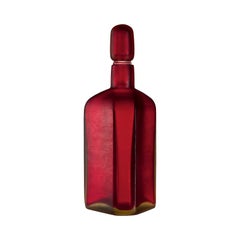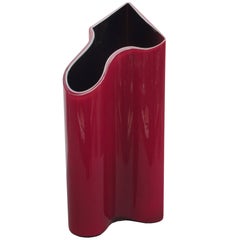Glass
21st Century and Contemporary Italian Modern Glass
Blown Glass
20th Century Italian Modern Glass
Glass
1930s Italian Mid-Century Modern Vintage Glass
Murano Glass
1930s Italian Mid-Century Modern Vintage Glass
Murano Glass
Early 20th Century Italian Mid-Century Modern Glass
Art Glass, Murano Glass
1990s Italian Modern Glass
Art Glass
Late 20th Century Italian Mid-Century Modern Glass
Art Glass, Murano Glass
Late 20th Century Italian Mid-Century Modern Glass
Art Glass, Murano Glass
1950s Italian Mid-Century Modern Vintage Glass
Murano Glass
1940s Italian Art Deco Vintage Glass
Murano Glass
Late 20th Century Italian Mid-Century Modern Glass
Art Glass, Murano Glass
Late 20th Century Italian Mid-Century Modern Glass
Art Glass, Murano Glass
Mid-20th Century Italian Mid-Century Modern Glass
Art Glass, Murano Glass
1940s Italian Mid-Century Modern Vintage Glass
Murano Glass
1980s Italian Other Vintage Glass
Murano Glass
Early 20th Century Italian Mid-Century Modern Glass
Art Glass
Mid-20th Century Italian Mid-Century Modern Glass
Art Glass, Murano Glass
Mid-20th Century Italian Mid-Century Modern Glass
Art Glass, Murano Glass
Mid-20th Century Italian Mid-Century Modern Glass
Art Glass, Murano Glass
Mid-20th Century Italian Mid-Century Modern Glass
Art Glass, Murano Glass
1980s Italian Post-Modern Vintage Glass
Murano Glass
1980s Italian Modern Vintage Glass
Art Glass, Blown Glass
Late 20th Century Italian Glass
Murano Glass
Late 20th Century Italian Mid-Century Modern Glass
Art Glass, Murano Glass
1950s Italian Mid-Century Modern Vintage Glass
Glass, Art Glass, Blown Glass, Murano Glass
1980s Italian Mid-Century Modern Vintage Glass
Art Glass, Blown Glass, Cut Glass
1950s Italian Mid-Century Modern Vintage Glass
Glass, Art Glass, Blown Glass, Murano Glass
1990s Italian Mid-Century Modern Glass
Murano Glass, Opaline Glass
1950s Italian Art Deco Vintage Glass
Murano Glass
Early 2000s Italian Modern Glass
Murano Glass
Late 20th Century Italian Post-Modern Glass
Murano Glass
1950s Vintage Glass
Glass, Art Glass, Murano Glass
1960s Italian Mid-Century Modern Vintage Glass
Glass, Art Glass, Blown Glass, Murano Glass
21st Century and Contemporary Italian Modern Glass
Blown Glass
20th Century Italian Mid-Century Modern Glass
Glass
1970s Italian Mid-Century Modern Vintage Glass
Murano Glass
1990s Italian Mid-Century Modern Glass
Blown Glass
1950s Italian Mid-Century Modern Vintage Glass
Murano Glass
Mid-20th Century Italian Mid-Century Modern Glass
Art Glass, Murano Glass
1940s Italian Mid-Century Modern Vintage Glass
Glass, Murano Glass
1930s Italian Art Deco Vintage Glass
Murano Glass
Mid-20th Century Italian Mid-Century Modern Glass
Art Glass
20th Century Glass
Glass
Mid-20th Century Italian Mid-Century Modern Glass
Art Glass, Murano Glass
1990s Italian Other Glass
Murano Glass
1950s Italian Mid-Century Modern Vintage Glass
Glass, Murano Glass
1980s Italian Mid-Century Modern Vintage Glass
Art Glass, Blown Glass, Cut Glass
Mid-20th Century Italian Mid-Century Modern Glass
Art Glass, Murano Glass
1950s Italian Mid-Century Modern Vintage Glass
Blown Glass, Murano Glass, Opaline Glass
Mid-20th Century Italian Mid-Century Modern Glass
Art Glass, Murano Glass
Mid-20th Century Italian Mid-Century Modern Glass
Art Glass, Murano Glass
1950s Italian Mid-Century Modern Vintage Glass
Glass, Murano Glass
1980s Italian Post-Modern Vintage Glass
Glass
Mid-20th Century Italian Mid-Century Modern Glass
Art Glass, Murano Glass
1950s Italian Mid-Century Modern Vintage Glass
Blown Glass
1940s Italian Mid-Century Modern Vintage Glass
Gold Leaf
Mid-20th Century Italian Mid-Century Modern Glass
Art Glass, Murano Glass
Late 20th Century Italian Mid-Century Modern Glass
Art Glass, Murano Glass
Antique, New and Vintage Glass
Whether you’re seeking glass dinner plates, centerpieces, platters and serveware or other items to elevate the dining experience or brighten the corners of your living room, bedroom or other spaces by displaying decorative pieces, find an extraordinary range of antique, new and vintage glass on 1stDibs.
Glassmaking is more than 4,000 years old. It is believed to have originated in Northern Mesopotamia, where carved glass objects were the result of a series of experiments led by potters or metalworkers. From there, the production of glass vases, bottles and other objects proliferated in Egypt under the reign of Thutmose III. Later, new glassmaking techniques took shape during the Hellenistic era, and glassblowing was invented in contemporary Israel. Then, on the island of Murano in Venice, Italy, modern art glass as we know it came to be.
Over the years, collectors of glass decorative objects or serveware have sought out distinctive antique and vintage pieces of the mid-century modern, Art Deco and Art Nouveau eras, with artisans such as Archimede Seguso, René Lalique and Émile Gallé of particular interest for the pioneering contributions they made to the respective styles in which they worked. Today, long-standing glassworks such as Barovier&Toso carry on the Venetian glasswork tradition, while modern furniture designers and sculptors such as Christophe Côme and Jeff Zimmerman elsewhere test the limits of the radical art form that is glassmaking.
From chandeliers to Luminarc stemware, find a collection of antique, new and vintage glass on 1stDibs.



